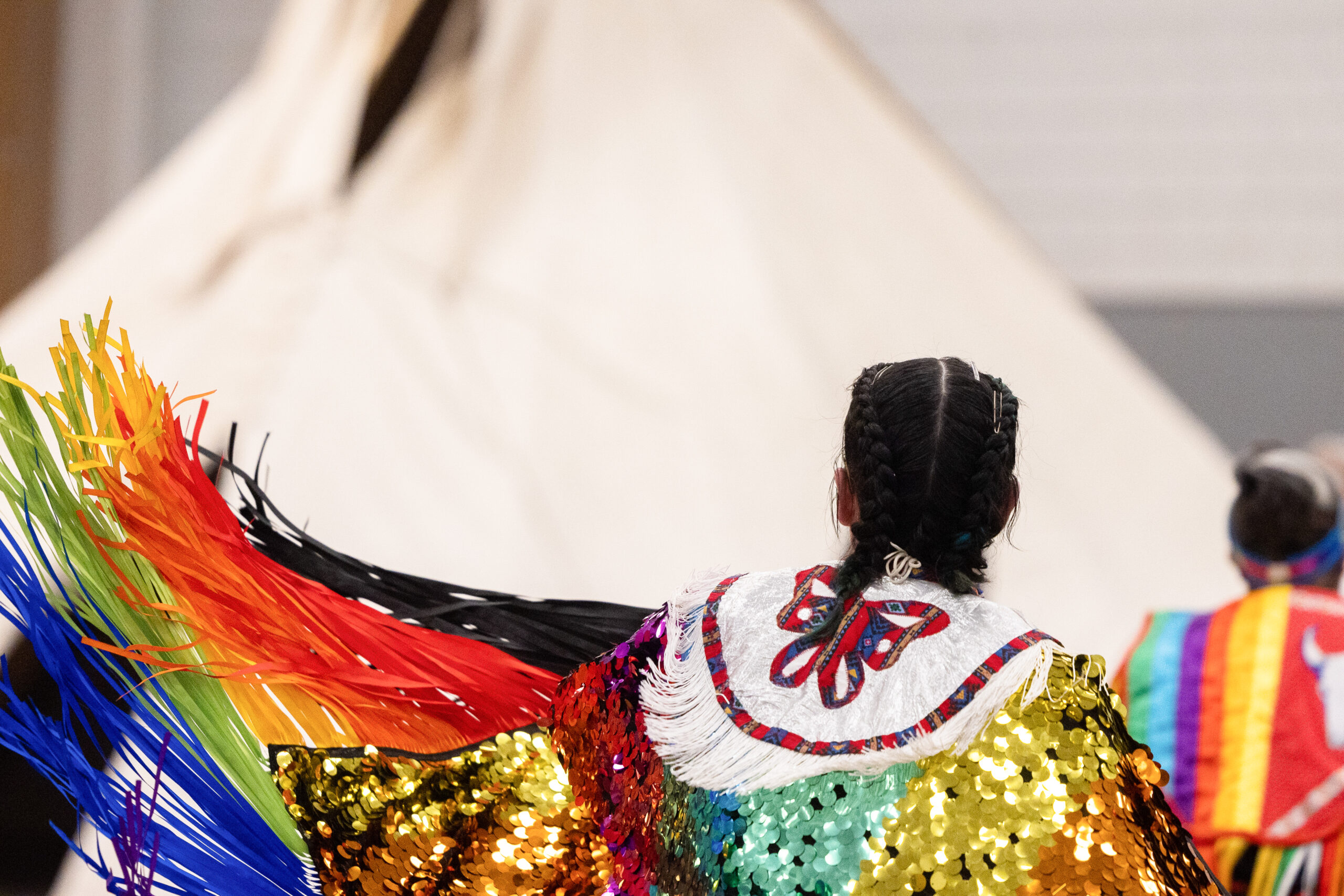Powwow dancing and the powwow circle provides a space for communities to come together and for people’s creativity and self-identification to shine through. The first of its kind in western South Dakota, the Annual Two-Spirit Powwow, was held in Rapid City this summer.
It was organized by Uniting Resilience, a local non-profit organization working to advance social and legal equality for LGBTQ and Native Two-Spirit individuals. Organized by founders Felipa Mousseaux and her wife Monique “Muffie” Mousseaux, the event welcomes all and provides a safe space for people to dance with and for their communities.
The day was filled with community and warmth. Greeters met attendees at the entrance with sage burning in an abalone shell—an invitation to use the sweet smoke to smudge yourself before entering. Throughout the arena artists set up their work on tables and offered their pieces ranging from intricately beaded earrings, quillwork and leatherwork. Many of the dancers also participated in selling their artwork. Local non-profits were also present, offering their support and information about their work.
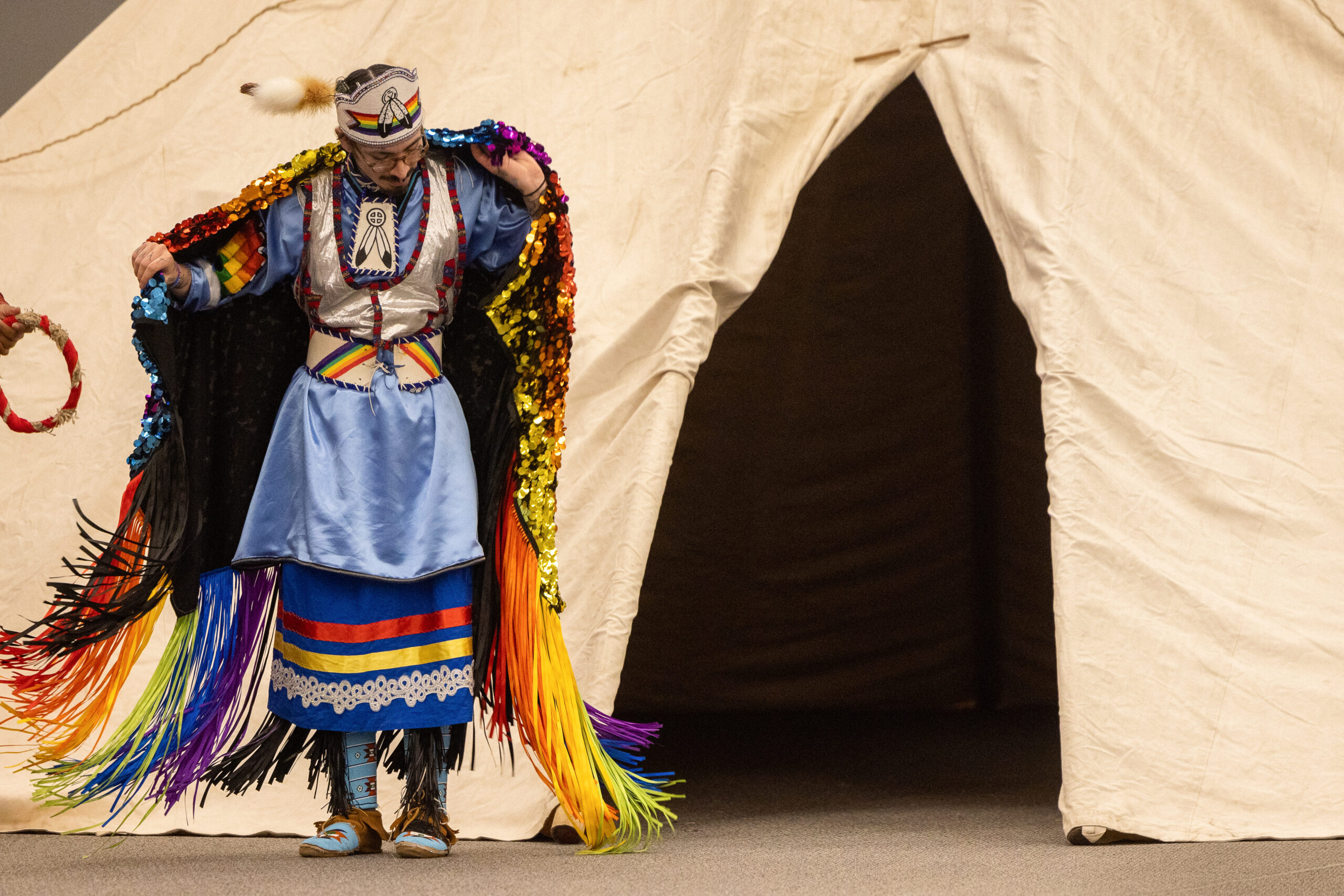
The day began with a royalty contest to elect a spokesperson for the powwow throughout the year. The contest provided space for community members to speak and share about what this responsibility would look like for them. The crowd elected eight-year-old Kamiliah Stewart to serve as the Two-Spirit Powwow Royalty for the year.
There was a wide range of attendees, from children to elders. The day’s events provided space for laughter and connection with opportunities like the potato dance, which invited community members to join in.
The potato dance invites people to come into the powwow circle and hold a potato between their heads while dancing throughout a song and if the potato drops they must leave the circle. The last ones remaining with a potato win the contest.
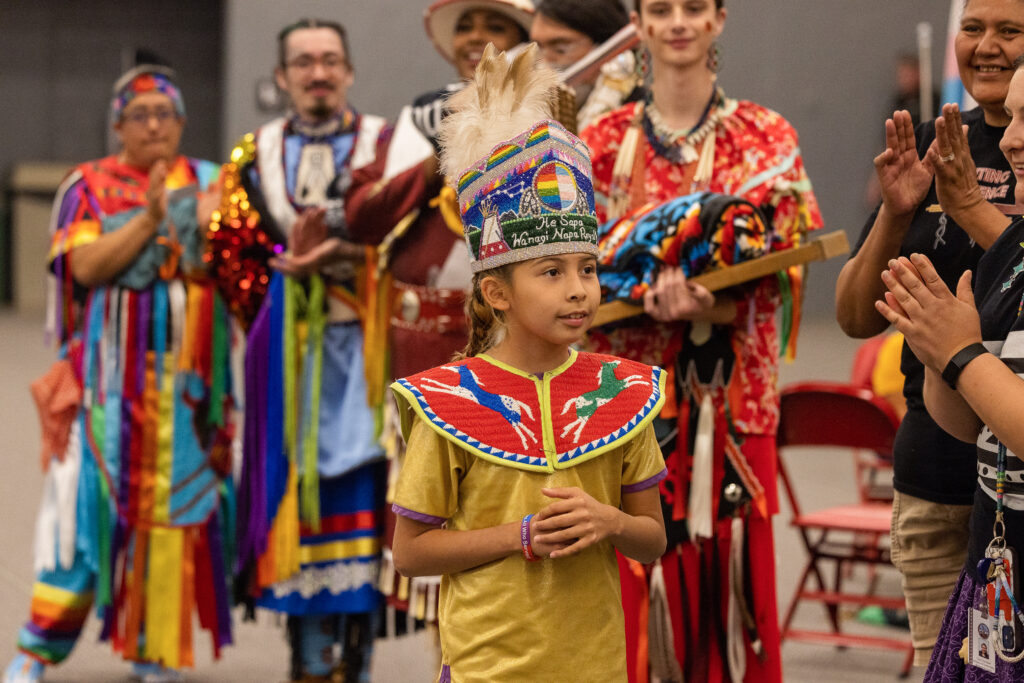


FENTIE LEBEAU“I’ve been trying to heal myself and for me to dance is doing that. I told my mom last year that I want to dance. You have to go through that process of working on yourself and healing yourself to do this dance, because you cannot bring healing if you yourself are not going through that healing process.”


Fentie LeBeau
24, Cheyenne River Lakota and Oglala Lakota
“For me, it’s so important to have access to this space because back when the Standing Rock protests were going on, that’s where I grounded myself and got back to my spirituality. I was the last of my family to show up but the last of my family to leave. Amongst our own (Indigenous) people we have such diversity, and so for this to be a thing in Rapid City, is such an eye opener,” said LeBeau.
The Two-Spirit Powwow was the first time LeBeau participated in Jingle Dress dancing, which is considered a healing dance.
The Jingle Dress dance and dress were born out of our last global pandemic—the flu pandemic of 1918. A young Ojibwe woman, fevered with flu, dreamt about the dance and when she awoke out of her illness she had the idea of using dance as a healing art.
“I’ve been going through a lot, I just moved back from Sioux Falls, South Dakota, and that was the first time I saw the Two-Spirit Powwow.” Sioux Falls held their first Two-Spirit Powwow in 2022, hosted by Uniting Resilience.
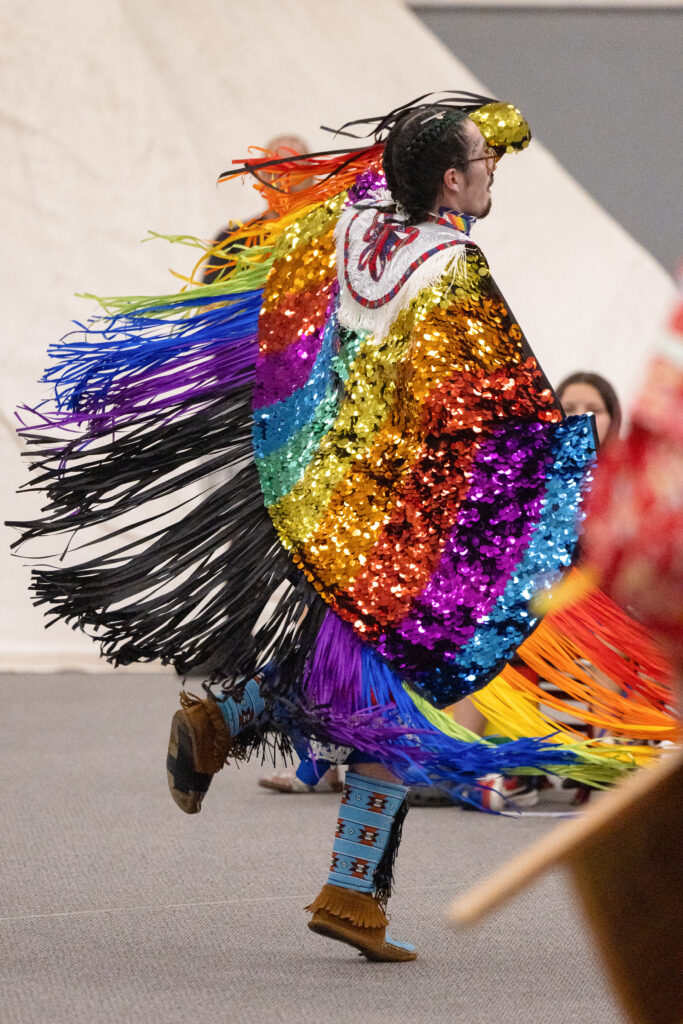

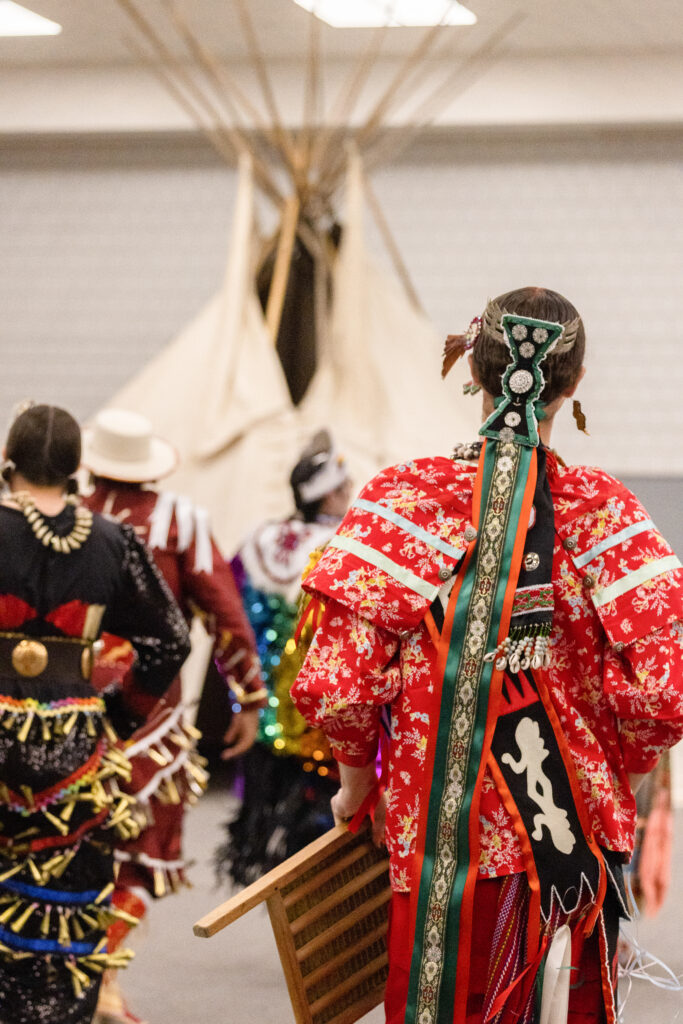
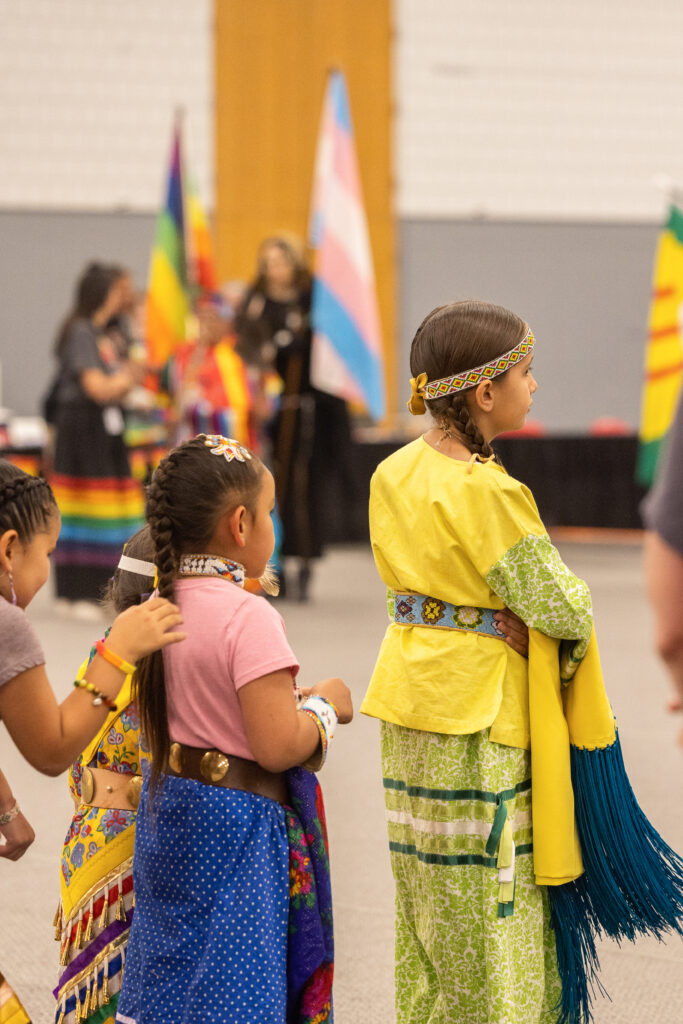

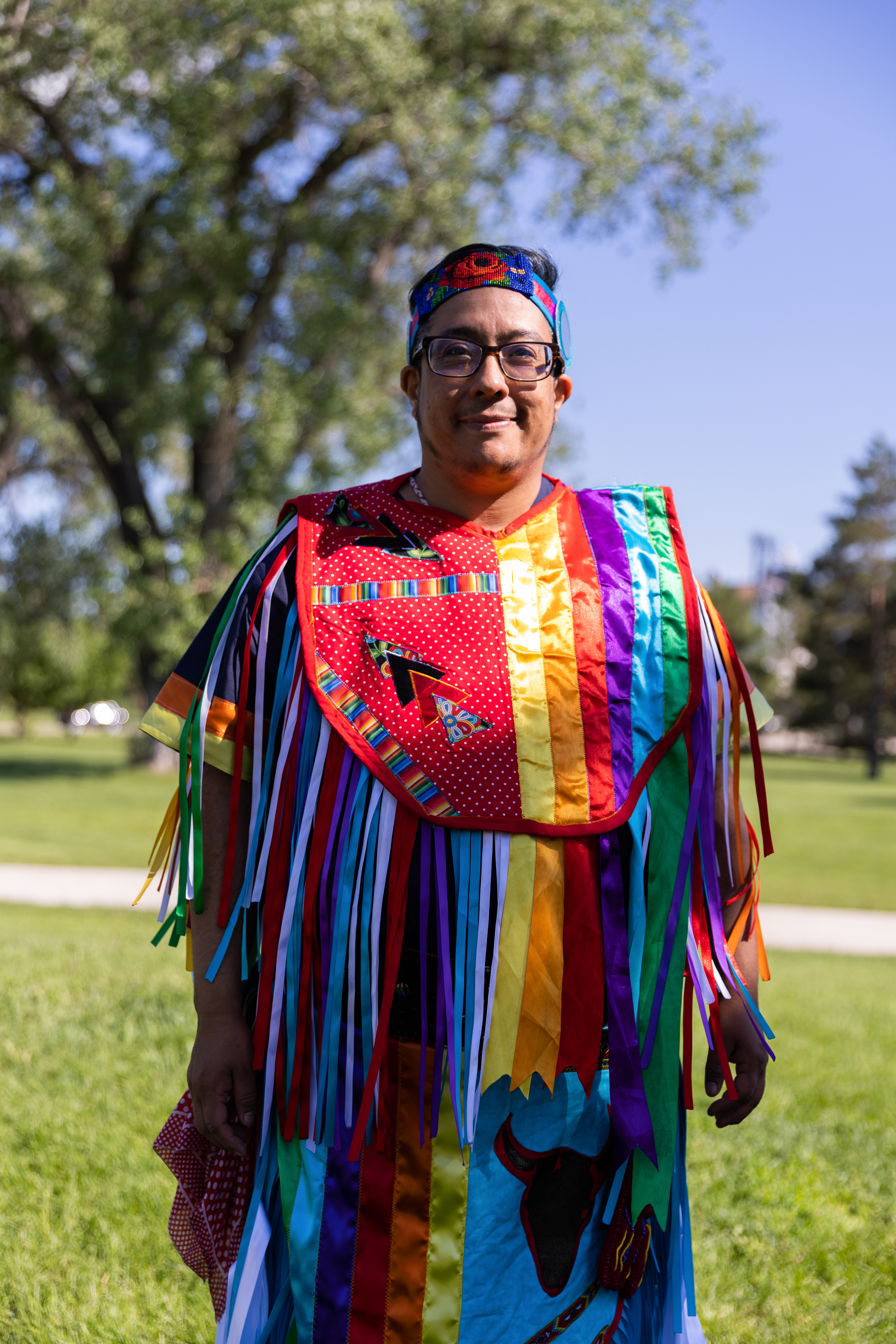
Jesse Guecha
43, Muisca People from Colombia, Seattle, Washington
“Last year at the International Two-Spirit Gathering in Montana, I met Muffie and Felipa and I was really inspired by them and have been following the work they’re doing. When I heard they were doing this Powwow I wanted to come out and support them. I’ve been wanting to be a grass dancer for five years, and Covid slowed that down and just life…but I couldn’t think of a better Powwow to come out as a Grass Dancer.” Just like the origins of Powwows themselves, the origins of the Grass Dance hold many stories across many different nations. From visions from young men observing the way in which prairie grass moves and dances with the wind to the flattening of prairie grasses by scouts before ceremony or dance.
Guecha’s regalia pieces were gifted to him by different family and community members that supported his journey into becoming a Grass Dancer.
“I would encourage everyone to come next year, I hope to keep coming back and I look forward to it growing. It’s for everyone.” Guecha proudly stated.

Anthony Khangi Thanka
21, Oglala Lakota
“I think it’s everything,” said Thanka about the powwow being accessible and so close to their home in Pine Ridge Indian Reservation, which shares geography with the state of South Dakota. “I waited a long time for something like this to happen here. I really enjoyed being here and I hope it’s something we continue to do.”
“I would tell every Two-Spirit person that they should come and enjoy themselves and feel welcomed in the space. It is a safe place.”
MONTE MUGGINS“I get to portray and show people that it’s okay to be who you are. Especially since a lot of times I’ve been threatened at powwows. And at this Two-Spirit Powwow I feel welcomed. I feel like I’m making history, especially to have something like this in South Dakota.”

Monte Muggins
20, Cheyenne River
“It means more visibility,” Muggins said about dancing at the powwow.
Muggins dances Fancy Shawl, a form of powwow dance that involves a shawl. Their shawl was covered with rainbow-colored sequins.
Muggins has been dancing since they were six years old but just recently picked it back up when they turned 18.
The powwow ended with a showing of Larissa FastHorse’s play ‘Wicoun,’ a story about a Two-Spirit teenager navigating life raising their siblings in a world where zombies are on the prowl, and trying to graduate high school all while accidentally summoning Lakota superheroes.
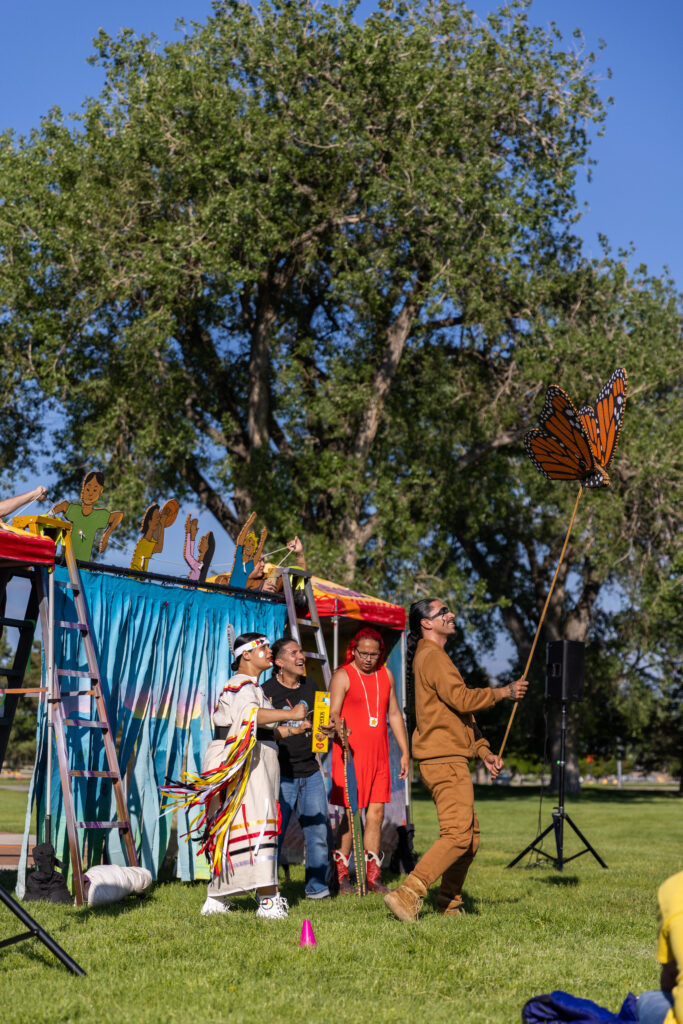
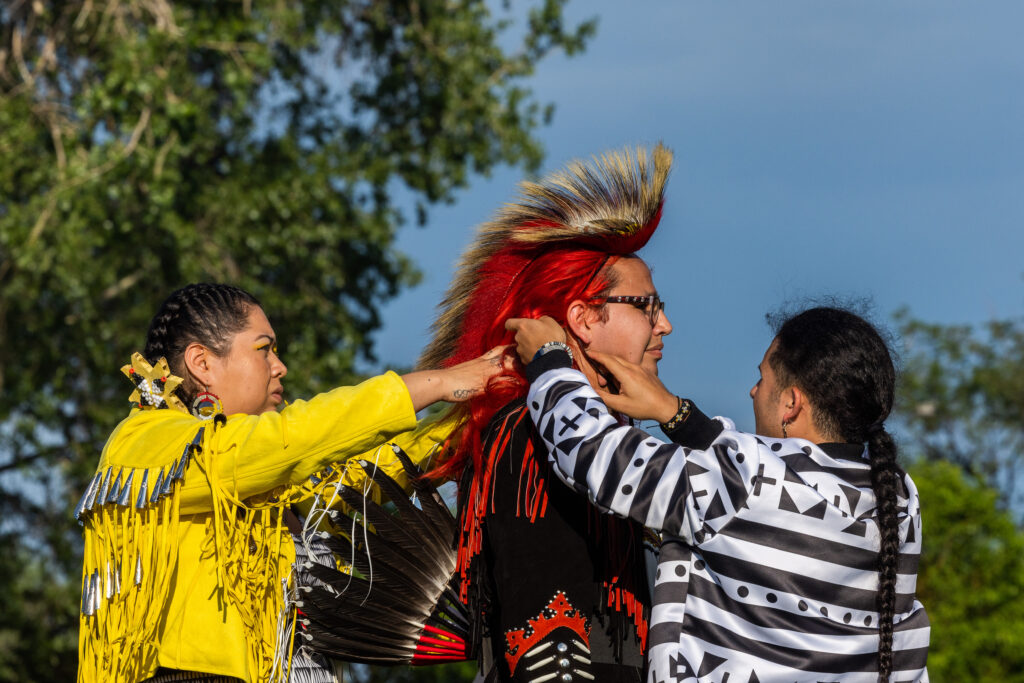

CHRISTOPHER ALEXANDER PIÑA“For anyone struggling with who they are, please remember that you are not alone. We are all here for support.”

Christopher Alexander Piña
32, Oglala Lakota
“Being Two-Spirit in a place where it is not generally accepted is very difficult at times. I wake up with three strikes against me: I am gay, I am a male, and I am Indigenous. So all my life I have had to battle for a place in society. The first Two-Spirit Powwow [in Rapid City] was a safe space for our LGBTQ+ members to freely express the wonderful beauty of who they truly are without fear of judgment or discrimination,” said Piña.
“Being a superhero in the play ‘Wicoun’ helped me realize that I am a light in a dark space. We are now beacons of hope.”
